Ireland is rich in archaeological heritage and prehistoric sites. The variety of different megalitic tombs, stone circles, dolmens and other monuments is unique in Europe. They give an insight into the life of people thousands of years ago and are witnesses to their religion, their artistry, their social order, their relationship to the country and their complex rituals. In this post, we introduce you to the six best prehistoric sites that will transport you to an Ireland from the ancient past.
1. Newgrange, County Meath
About 40 kilometers from Dublin is Brú na Bóinne, a prehistoric site that contains various ancient monuments. Among them are three impressive passage graves: Newgrange, Dowth and Knowth. In 1993, Brú na Bóinne was declared a World Heritage Site because of the outstanding megalithic art treasures in the tombs.
The site near the River Boyne looks back on a settlement history of around 6,000 years. According to Irish mythology, the Tuatha Dé Danaan, a people made up of demi-gods who ruled the island before the Celts, once lived here. At the end of their reign they allegedly retreated inside the mound and have been known as the fairy people ever since.
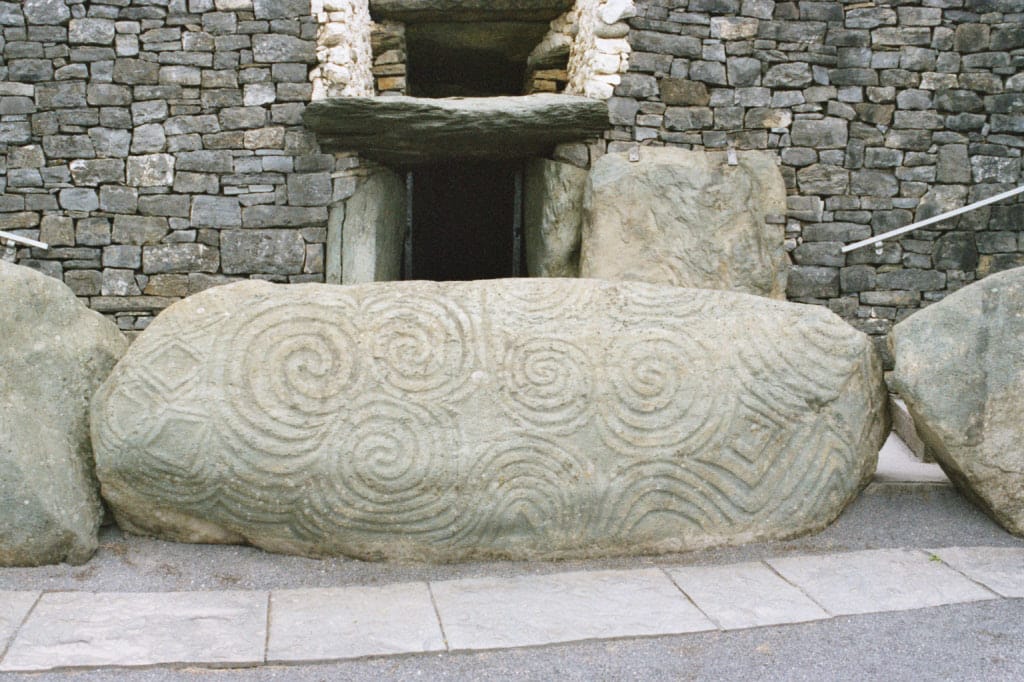
Newgrange in Ireland. Photo: Locutus Borg. To license.
2. Hill of Tara, County Meath
Not far from Brú na Bóinne is the Hill of Tara, a place that has served sacred ceremonies for millennia. Here is the stone of destiny, called Lia Fail, where the Irish high kings were crowned. With the help of certain rituals, they sought the approval of the earth and mother goddess Medb.
Tara is considered to be one of the oldest and most complex Celtic archaeological sites in all of Europe. The monuments include a passage grave from 3,400 BC, various heaped mounds and the “Fort of the Kings” (Ráith na Ríogh). The fort is a circular border around the highest point of Tara and dates from the Iron Age.
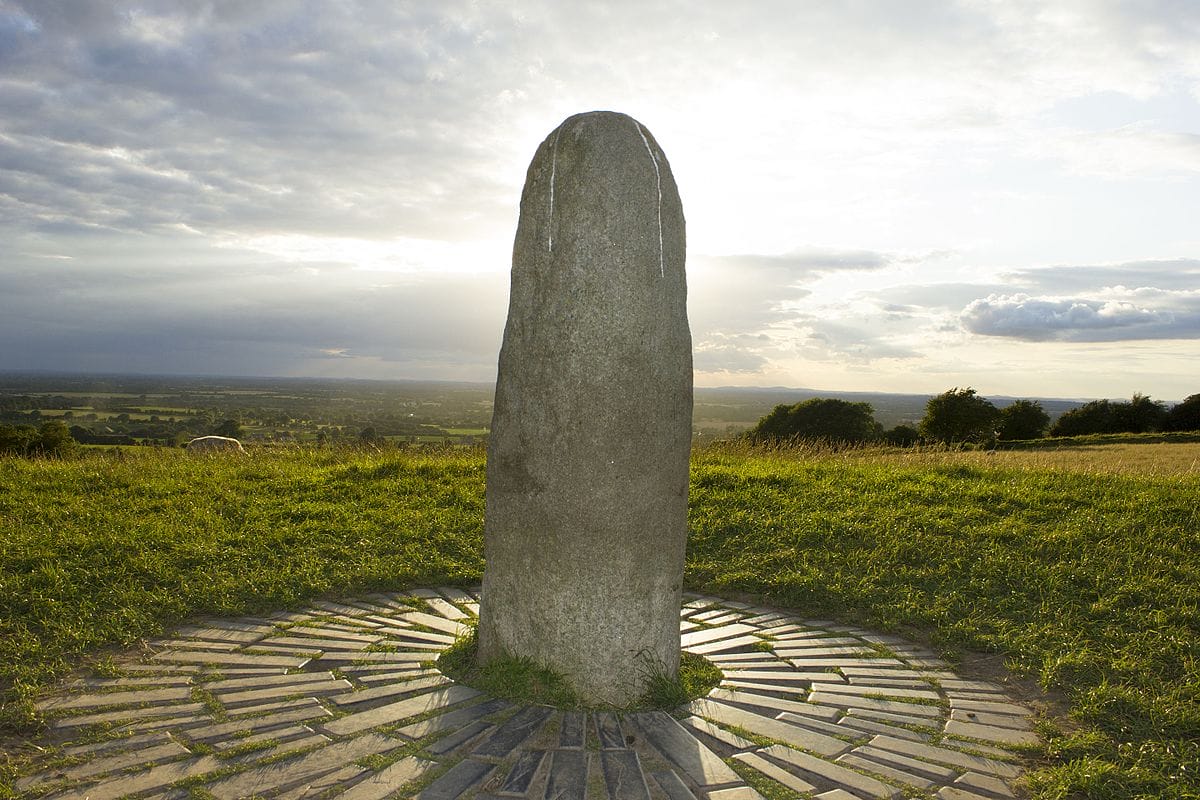
The stone of destiny. Photo: JohnJDuncan. To license.
3. Poulnabrone Dolmen, The Burren
Poulnabrone Dolmen (Irish name Poll na mBrón) is not only the oldest megalithic tomb in Ireland, it is also one of the most photographed prehistoric sites in Ireland. Based on the radiocarbon method, archaeologists assume that Poulnabrone was built 5,800 years ago. Typically for “portal tombs”, an immense capstone rests on vertical stones. In this way they form a chamber, inside of which the human remains of 21 people were found.
Located close to a main road, this monument is relatively easy to get to and takes visitors into the magical limestone landscape of The Burren in western Ireland. It can also be visited while hiking on the Burren Way hiking trail.
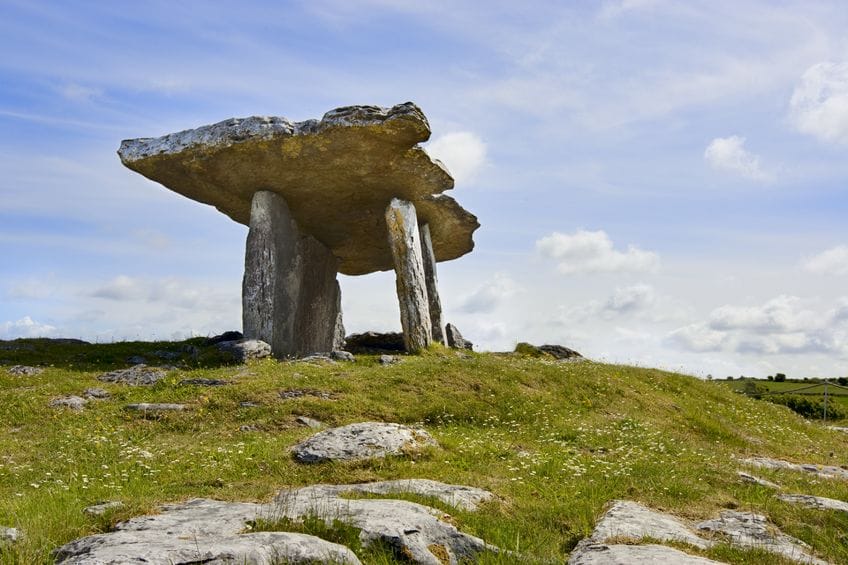
4. Dún Aonghasa, Aran Islands
The stone fort Dún Aonghasa (English Dun Aengus) is located on the edge of a hundred meter high cliff. This forms the “fourth wall” and drops steeply into the sea. This location makes the fort almost impregnable. According to archaeologists, construction of Dún Aonghasa began 1,100 BC on Inishmore, the largest of the three Aran Islands.
Today the prehistoric site is one of the most popular destinations for tourists. From the harbor you can hike or cycle to the impressive structure and enjoy the view of the seemingly endless Atlantic.
Visit Dún Aonghasa on a hiking tour of:
Connemara & the West of Ireland
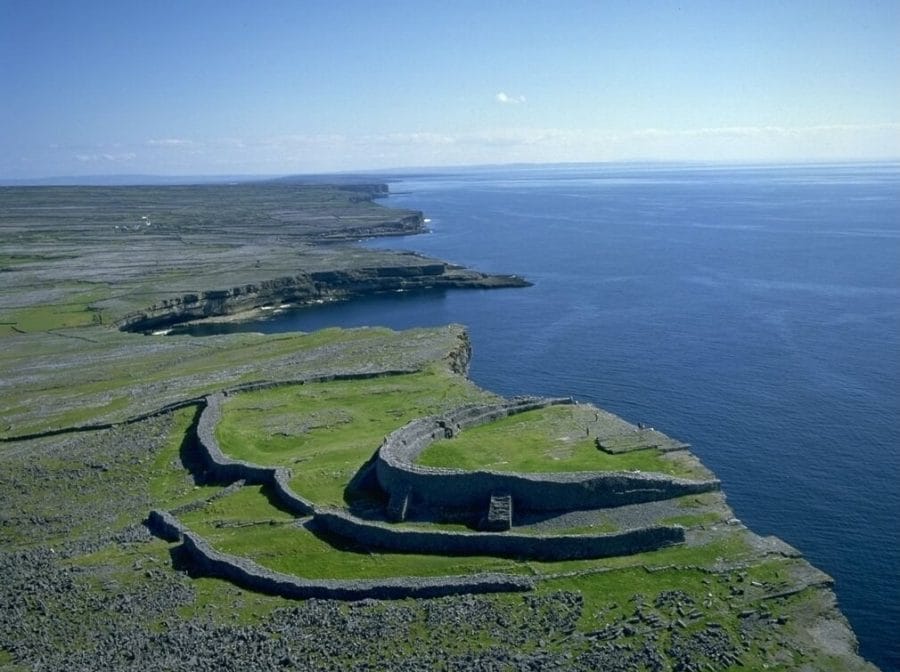
5. Drombeg Stone Circle, West Cork
The exact function of stone circles is still not entirely clear. Archaeologists assume that they were used for ceremonial purposes. Ireland has a total of 187 stone circles, and like Drombeg, most of them are in County Cork. The Drombeg stone circle was in use between 1100 and 800 BC. It is also known under the name “The Druid’s Altar”.
During the excavation in the 1950s, the remains of a cremated skeleton were found in the center of the stone circle, wrapped in cloth in a clay pot. Some suggest this was a sacrifice made on the winter solstice.
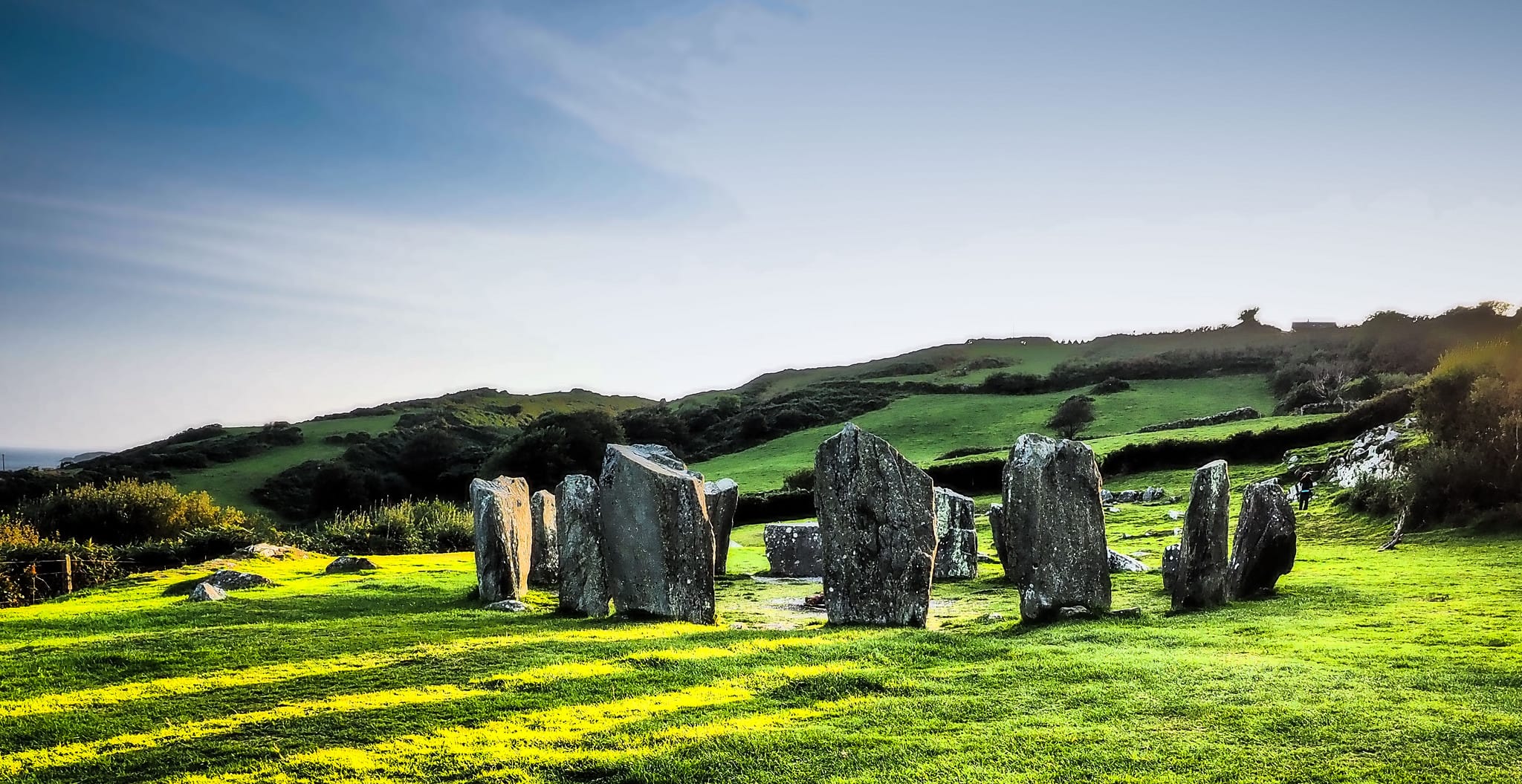
The Drombeg stone circle. Photo: ReflectedSerendipity. To License.
6. Knocknarea (Cnoc na Rí), County Sligo
At the top of Knocknarea is the second largest cairn in Ireland. At ten meters high, this monument can be seen from afar and dominates the view of Sligo Bay. The creation of such a visible landmark is a big step in the relationship between people and their environment.
It is believed that the cairn contains a passage tomb and was erected 3,000 BC. To date, however, no archaeological excavation has taken place here. Incidentally, the cairn is popularly known as “Queen Medb’s grave”. In Irish mythology, Medb is the legendary warrior queen of Western Ireland. One of the most famous legends is about how she had the award-winning bull stolen from the Ulster King (Northern Ireland) and thus started a war between the two regions.

Knocknarea and the grave of Queen Medb. Photo: KH. To license.


